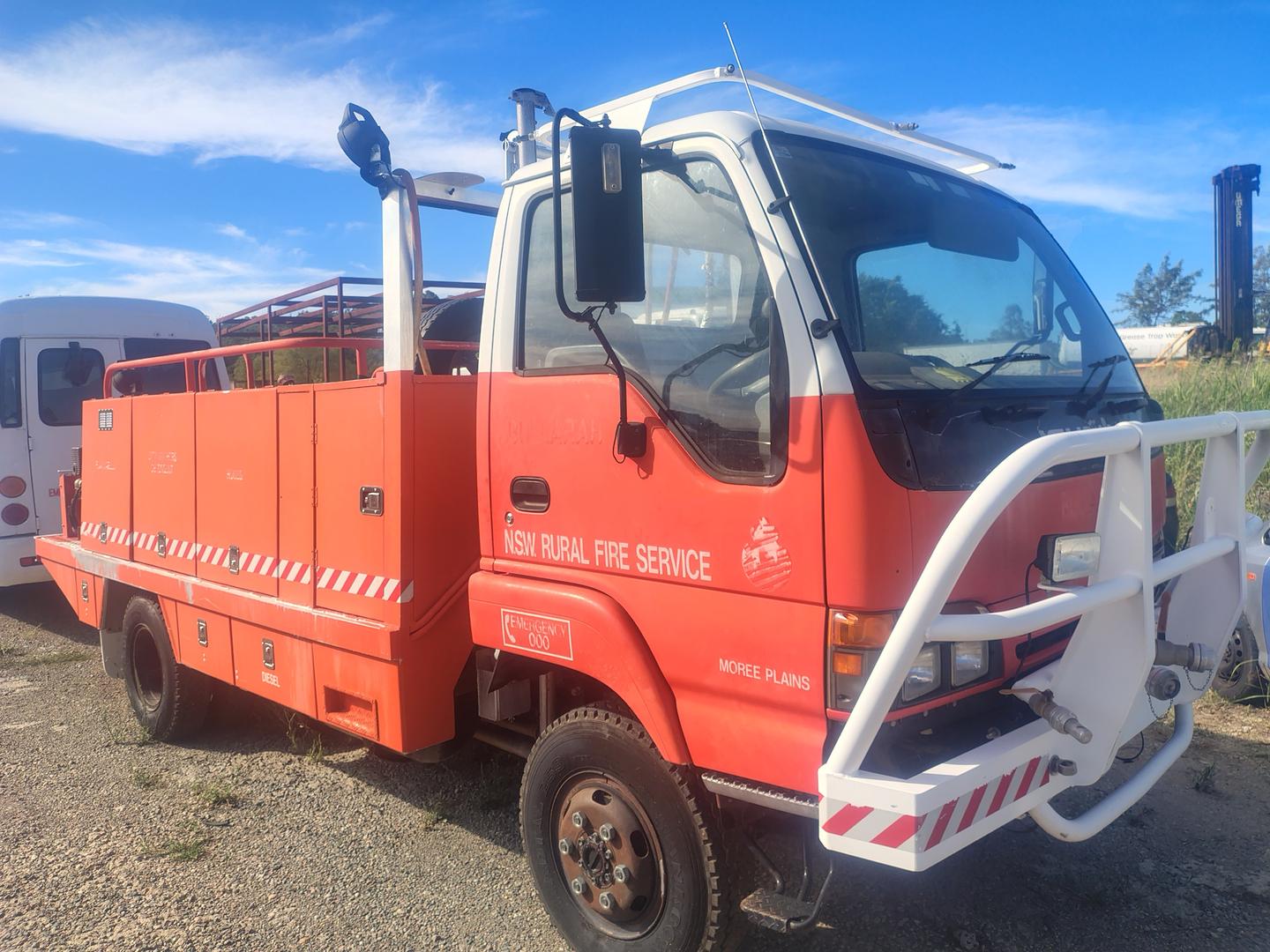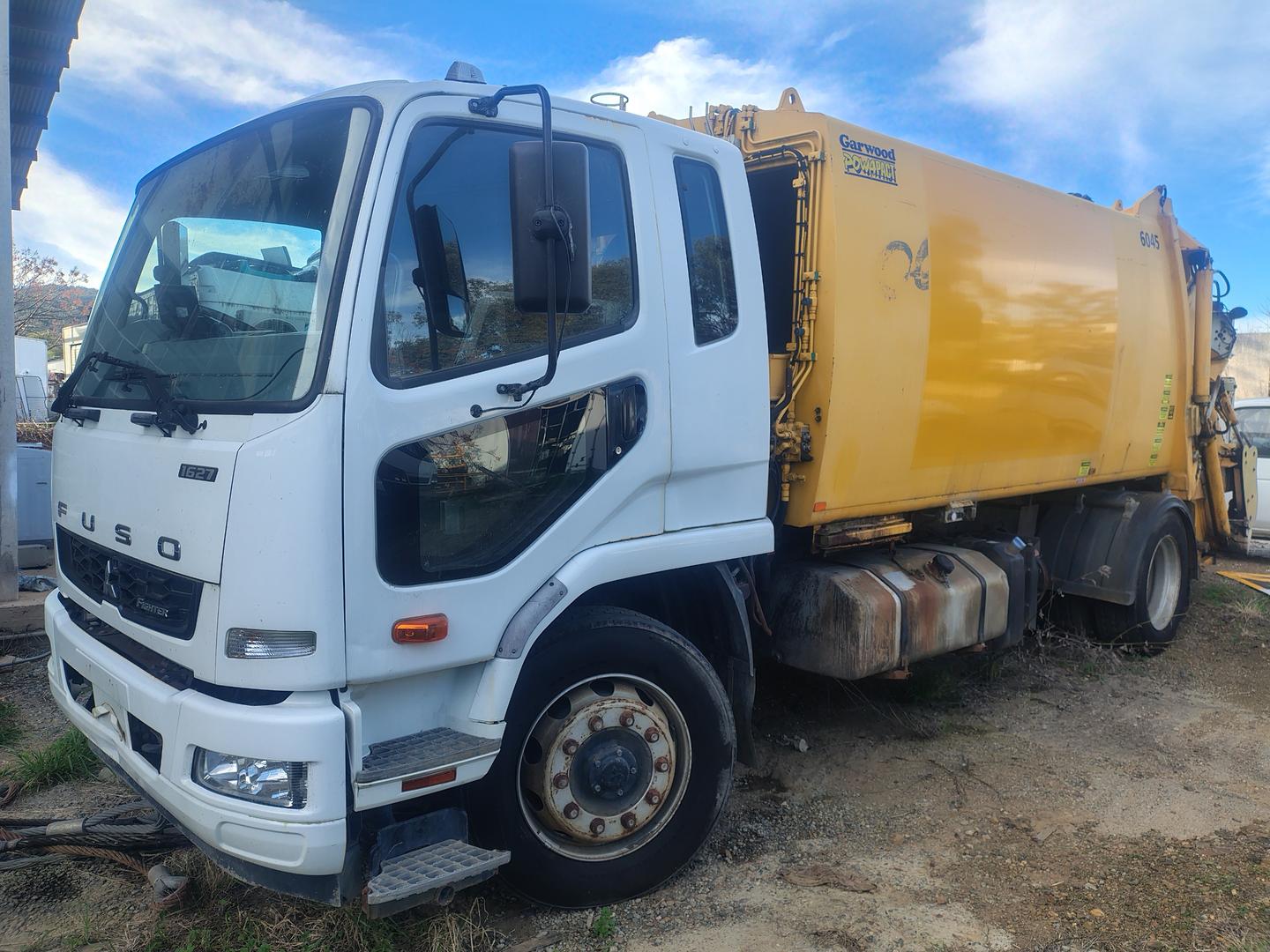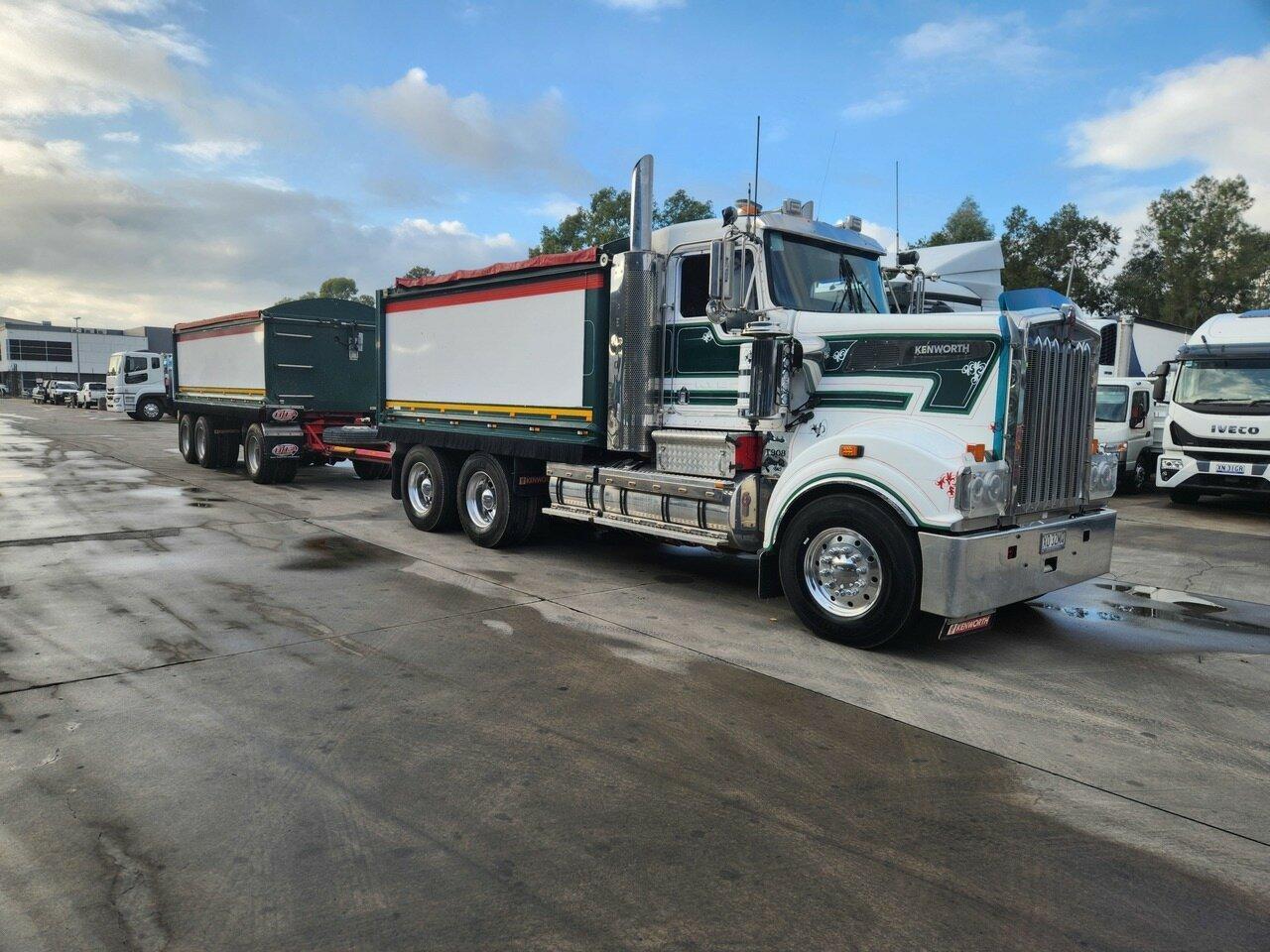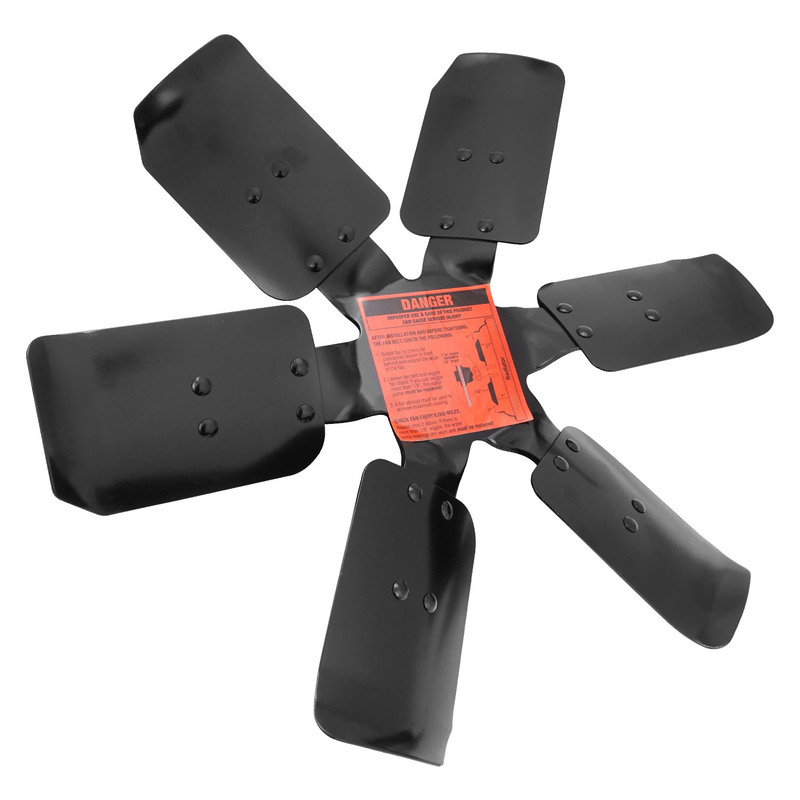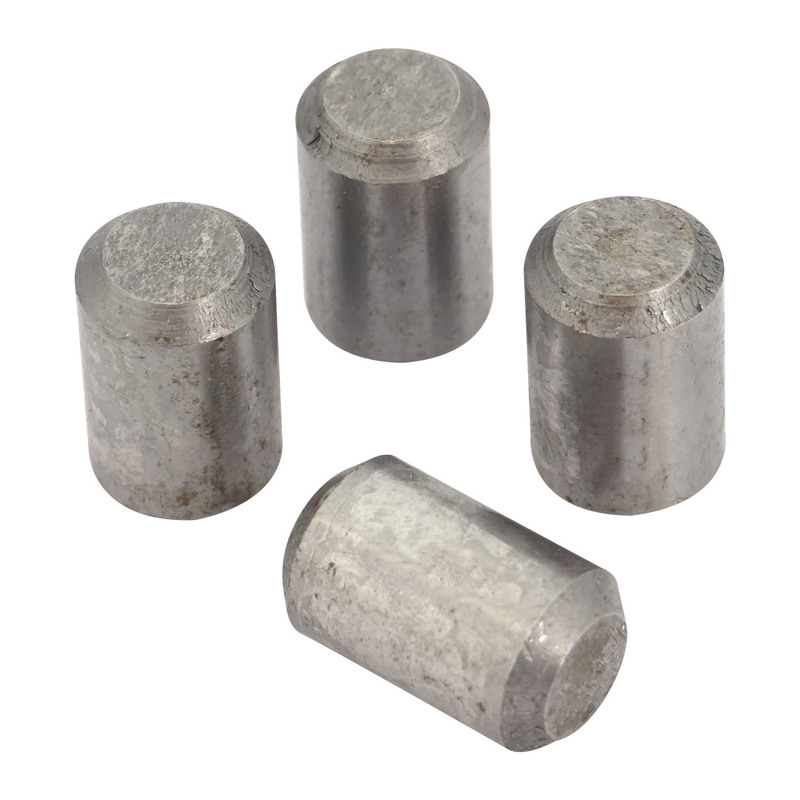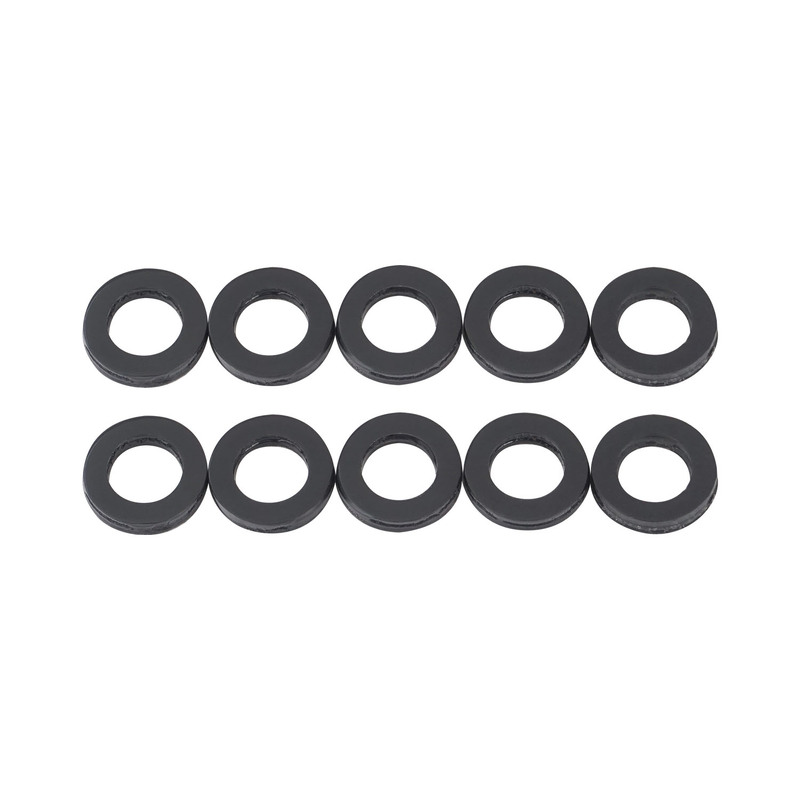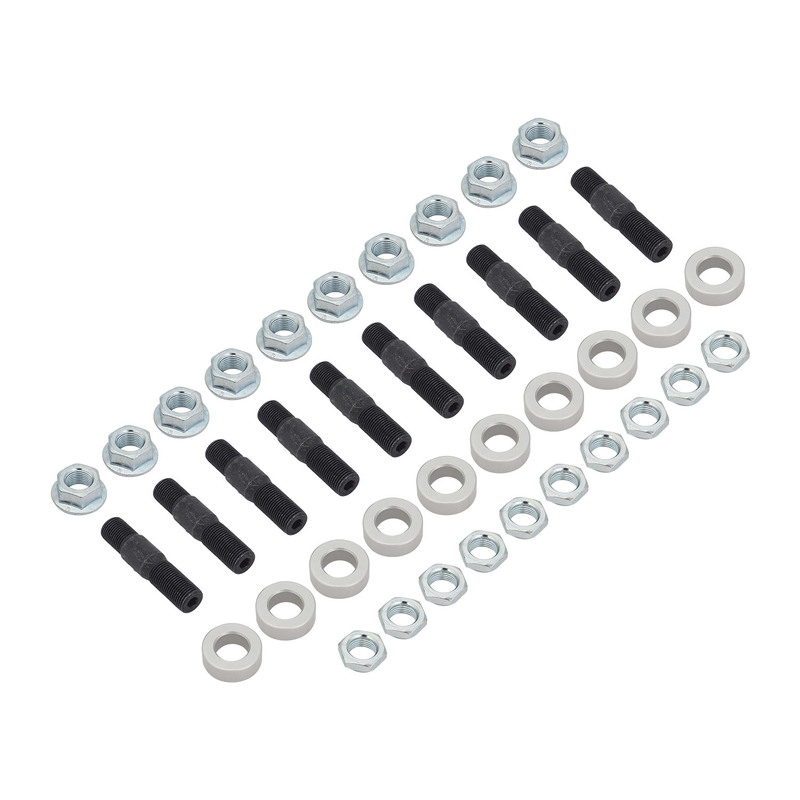Renault previews next-generation electric vans
Renault have released initial details on a new range of all-electric light vans they say will redefine the segment. The Estafette E-Tech, Geolette E-Tech and Trafic E-Tech are all based on SDV (Software Defined Vehicle) architecture developed in collaboration with Flexis, the French mobility solutions company that was co-founded by Renault, Volvo and CMA CGM.
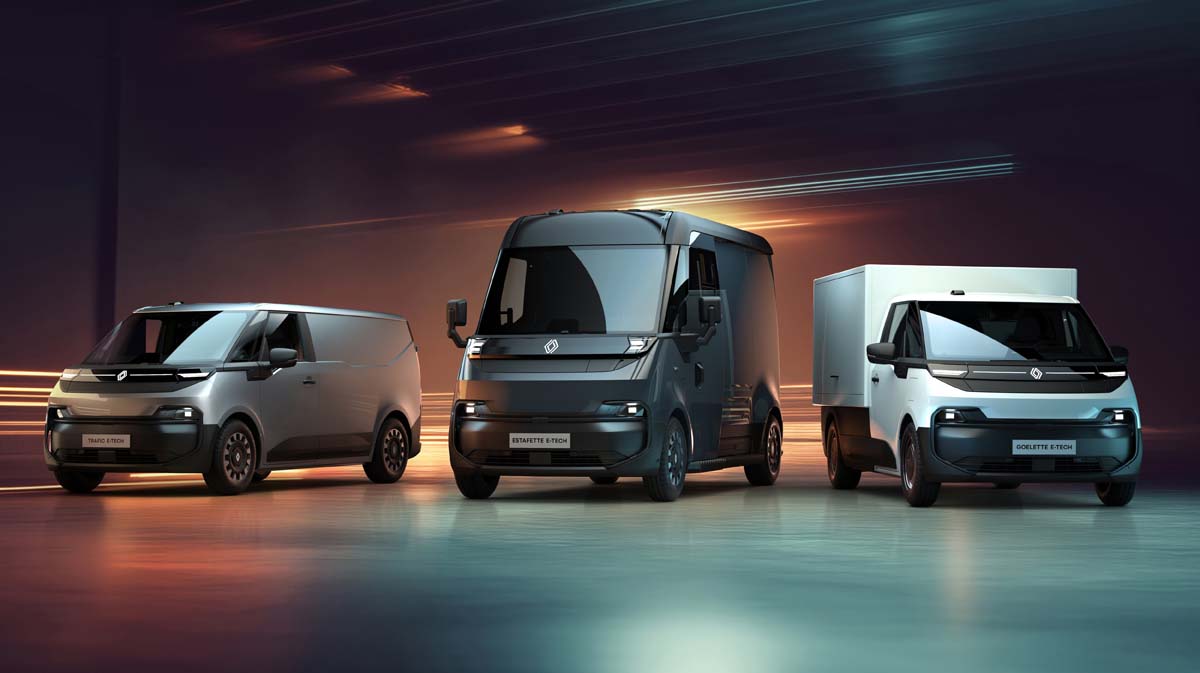
Building on a new “skateboard” platform and the SDV architecture, these compact, yet spacious and adaptable vans pave the way for tailored solutions that will support customers moving from ICE vans to EVs.
According to Renault, this new platform represents a significant advance in the design of intelligent vehicles, offering flexibility, ergonomics and connectivity. Reduced running costs with these EV LCVs combine with virtually infinite possibilities for customisation, while also guaranteeing high levels of safety and performance.

Renault adds that each of the three vans have their own identity and are designed to meet specific needs.
Due to arrive in European markets in 2026, an Australian release for the Trafic E-Tech, or any of the other new models, is yet to be confirmed. Renault currently offer the Kangoo, Trafic and Master vans in Australia, of which the Kangoo E-Tech is the only model available with a 100 per cent electric drivetrain.
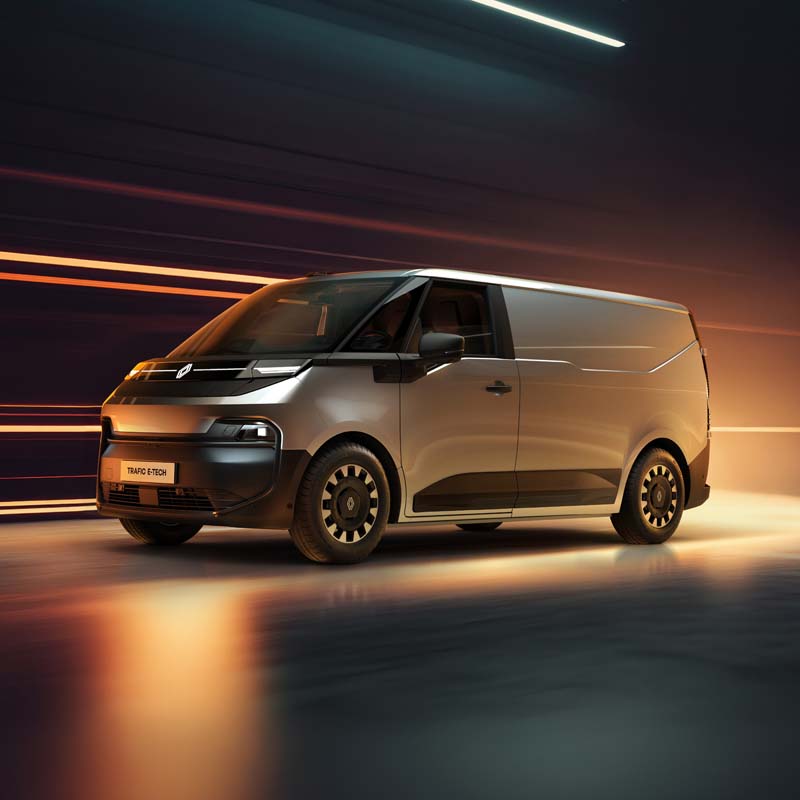
Trafic E-Tech electric: modern and functional
While the Trafic made its Australian debut in 2004, it’s been part of the light commercial market in Europe since 1980, with more than 2.5 million units built.
Entering its fourth generation with the E-Tech, the new Trafic electric features contemporary proportions and a one-box design, short front overhang and an extended wheelbase. Wheels positioned at the corners maximise interior space, while maintaining a turning circle that’s apparently equivalent to a Renault Clio hatchback. Height is less than 1.90m, ensuring easy access to underground car parks.
The overall appearance of the upcoming Trafic E-Tech reflects Renault's new design cues, with flowing, structured lines.
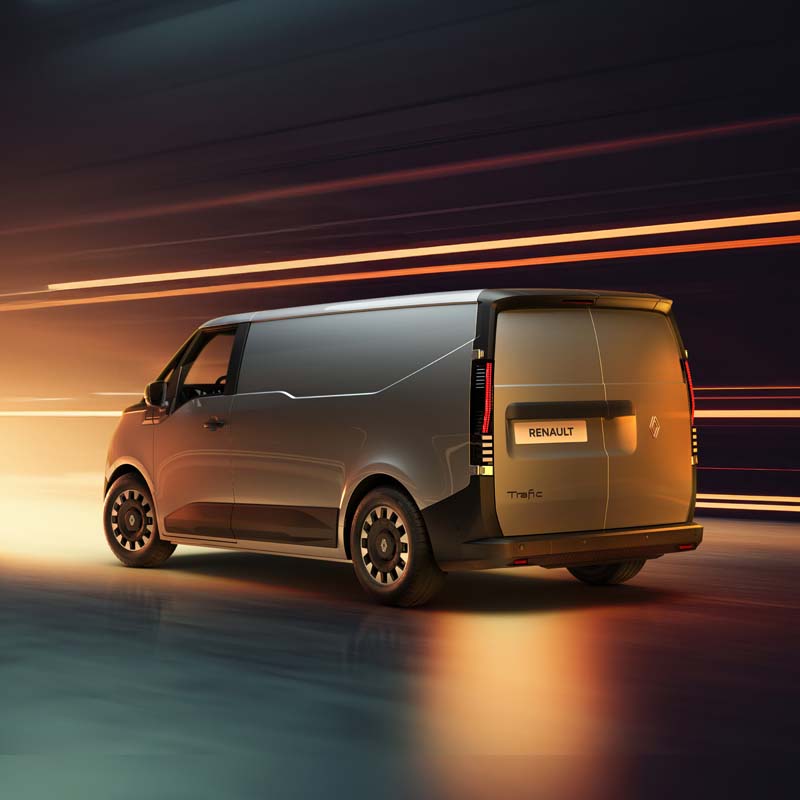
At the front end, a central feature underlines the vehicle's high-tech looks, showcasing a backlit upper strip with the Renault logo in the centre and side DRLs. A grained black finish for the front bumper is repeated at the rear.
Viewed from the side, the beltline is described as conveying a sense of movement and energy, even when the vehicle is stationary.
The rear end features a body line that’s level with the door windows, along with an asymmetrical housing for the numberplate and barn door handle. Black lower body cladding extends up the van’s trailing edge to a roof spoiler. Deflectors on this spoiler optimise aerodynamics. Tail lights sit between each rear door’s hinges and have a unique signature, enhanced by a 3D design.
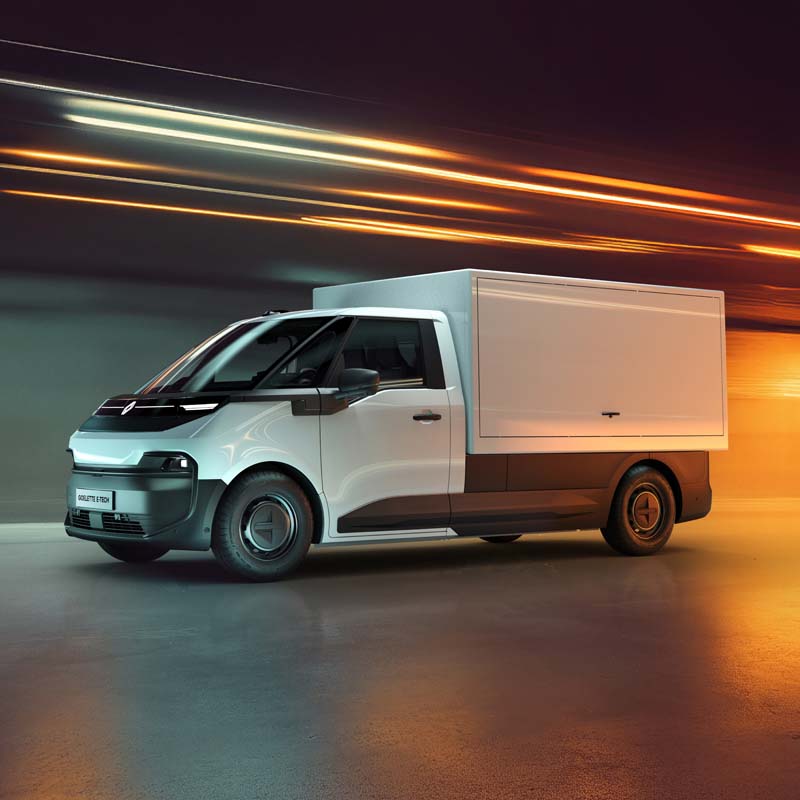
Goelette E-Tech electric: a versatile vehicle
While it’s never been offered in the Australian market, the Geolette is an historic Renault LCV, first appearing in 1956 and available in France for a decade. Something of a French equivalent to the Holden One-Tonner or VW’s T2 Transporter, the original Geolette was tough, robust and easy to convert, making it one of France’s most popular vans for fleets or small business owners with specific requirements.
The new Goelette E-Tech is available in three versions: cab chassis, box and tipper, allowing for a wide choice of conversions.
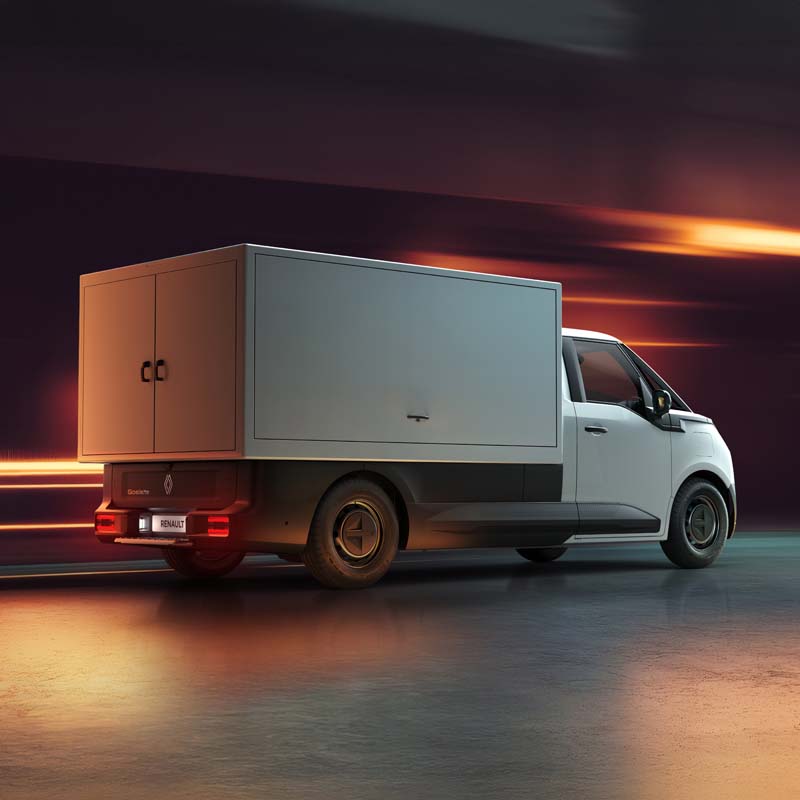
Well-proportioned at the front, the new Geolette has no specific body or equipment fitted aft of the B-pillar - it’s been designed to accommodate a virtually infinite range of fittings and custom features on the skateboard platform.
Structural parts within the Geolette E-Tech’s platform at the rear are able to accommodate a box or other configurations tailored to specific user requirements. Tail lights are described as being both functional and elegant, enhancing the overall design of the vehicle.
Available with or without running boards, the Goelette E-Tech electric is said to be a functional, modern and adaptable vehicle.

Estafette E-Tech electric: designed for the cities of today
Another name unfamiliar to the Australian market, Estafette has a long history in France, being offered there from 1959 to 1980. More than half a million examples of this urban-specific delivery vehicle were built during that 21-year period.
As a contemporary reboot of an iconic van, the Estafette E-Tech is still tailored to the demands of urban logistics. Sized to navigate narrow streets and dense areas, the Estafette E-Tech measures just 5.27m long and 1.92m wide, while its 2.60m height allows a person up to 1.90m tall to stand inside the cargo area.
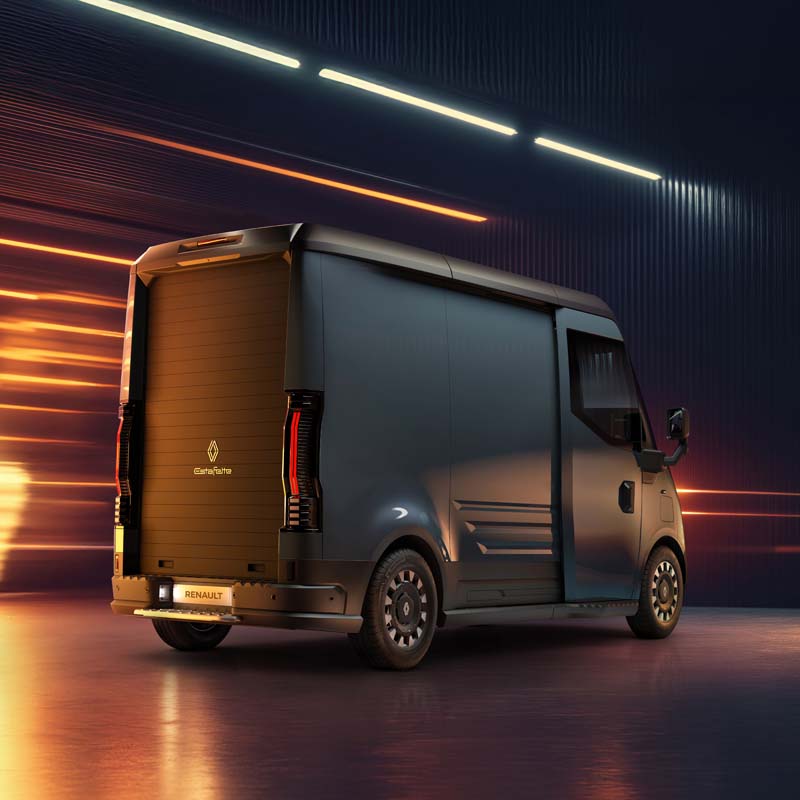
While the overall design is inspired by the Renault Estafette Concept presented last September, the production Estafette E-Tech features a front-end lighting signature that’s similar to that of the Trafic E-Tech, with an upper light strip aligned to DRLs.
The large, three-piece panoramic windscreen, also inspired by the Trafic E-Tech, offers greater visibility and safety. Sliding side doors have an invisible integrated track for smooth opening, while running boards on both sides make it easier to step in and out of the vehicle. A single-piece roller shutter door at the rear optimises load space, with a distinctive stainless-steel step/running board allowing for easy entry.
Grained black body protection aims to reduce the vehicle’s visual height, while also conveying the robust strength of the bodywork.


